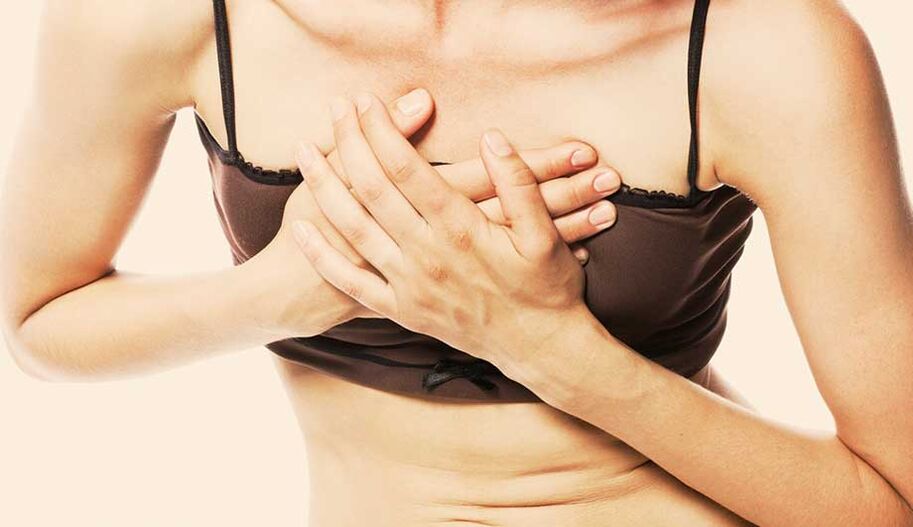Osteochondrosis is a very dangerous disease. It occurs invisibly and turns from mild anxiety to severe spinal disorders that sometimes lead to disability.

Therapists, neurologists, orthopedists, vertebrologists and other specialists are involved in the treatment of this disease.
Symptoms and sensations of thoracic osteochondrosis
Thoracic lumbar osteochondrosis is less common than cervical or lumbar osteochondrosis. The thoracic vertebrae are less mobile and more protected. The disease is complicated by the fact that it is difficult to diagnose symptoms and can later lead to a number of other diseases.
One of the main causes of osteochondrosis of the thoracic region is scoliosis in humans. With the curvature of the spine, spinal pressure increases and there is displacement and loss of discs from the spine. The pain caused by this disease is manifested by changes in the spine, impaired metabolism and blood supply. The disease mainly affects people living a sedentary lifestyle, office workers, drivers, students.
Symptoms and sensations with thoracic osteochondrosis are divided into the main pain syndromes: dorsago and dorsalgia. Dorsalgia is a persistent, chronic pain that is mild and causes little discomfort to the patient. Dorsago is a sudden, sharp pain. It occurs when a person is in a certain situation for a long time and changes it drastically. Shortness of breath may appear, breathing becomes difficult, muscles are poorly controlled.
Thoracic degenerative disc disease: symptoms and feelings are typical and atypical
Osteochondrosis of the thoracic region, like other diseases, has a number of characteristic features. List of typical symptoms:
- painful sensations intensify when breathing, turning the body, raising the arms;
- The pain starts in one place and then quickly spreads to the entire chest area. Difficulty breathing. The patient is forced to look for a comfortable position. Intercostal neuralgia occurs;
- muscles are very tense, spasms occur from time to time;
- The precursors of intercostal neuralgia are recurrent pain, discomfort in the back and chest that occurs when walking or exercising;
- The pain syndrome intensifies at night and decreases completely by morning. It also manifests itself in hypothermia.
Osteochondrosis of the thoracic region is characterized by symptoms and sensations that are characteristic of other diseases. Such symptoms are called atypical. These include:
- painful feelings similar to diseases of the cardiovascular system. There is no improvement when taking the drug, and it can even worsen your health. Also, no change is observed with an ECG;
- Pain in the mammary glands is characteristic of women in the acute stage of the disease. You can rule out this pathology by consulting a mammologist;
- sometimes patients complain of painful sensations similar to pain in gastritis, ulcers, diseases of the gastrointestinal tract. However, in contrast to these diseases, the pain with osteochondrosis is exacerbated during periods of exercise, not during meals;
- disorders of the urinary and reproductive systems;
- some patients have difficulty swallowing the reflex, a feeling of "roundness in the throat. "
Osteochondrosis of the chest requires immediate treatment and self-medication is unacceptable. This can lead to a worsening of the patient's condition and subsequent disability. Specialists can recognize the typical and atypical symptoms of the disease. Qualified doctors diagnose thoracic osteochondrosis with modern equipment and treat it using the latest effective methods.
Chest osteochondrosis: symptoms and treatment
The hospital uses the best schemes and methods for the treatment of thoracic osteochondrosis. The drug method helps to eliminate the inflammatory process and relieve pain. The main method of combating osteochondrosis is the long-term use of chondroprotectors. They restore the cartilage and elasticity of the intervertebral discs. A prerequisite for treatment for hospital patients is exercise therapy to strengthen the musculoskeletal system. Muscle relaxants are used (relieves muscle spasms), non-steroidal anti-inflammatory drugs.
Proper nutrition is needed to maintain overall balance and improve metabolism in the body. The hospital provides nutrition and inpatient services, where it is easier to maintain a healthy lifestyle during recovery than at home.
Additional treatments include:
- acupuncture;
- massages;
- physiotherapy;
- manual treatment;
- vacuum therapy.























